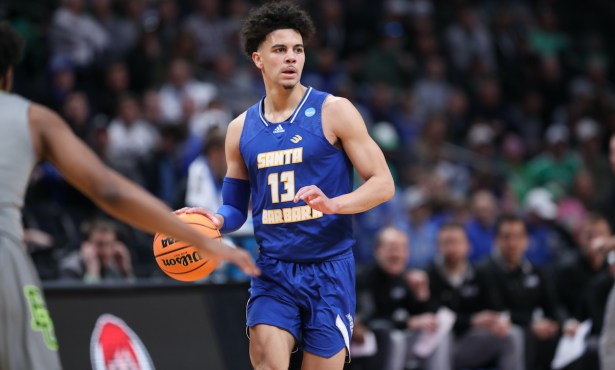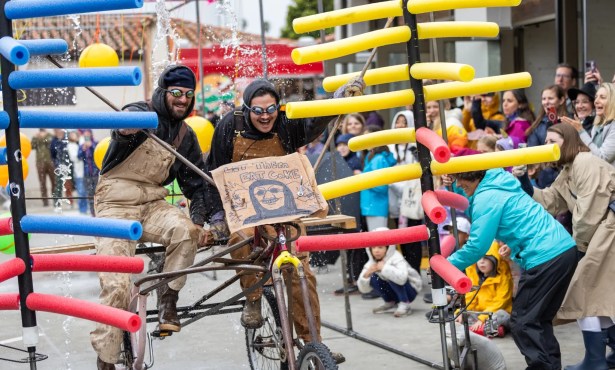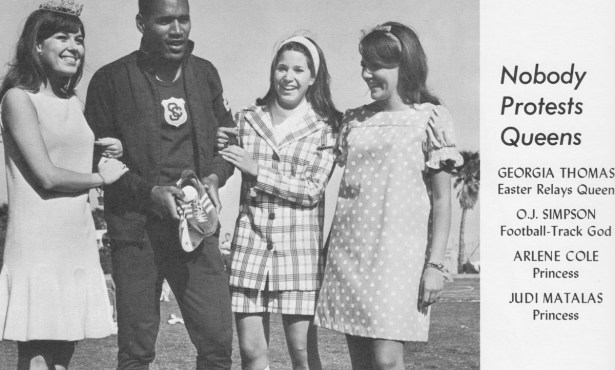Flying Aboard a Fortress
B-17 Trip With WWII Veteran Brings Back Memories
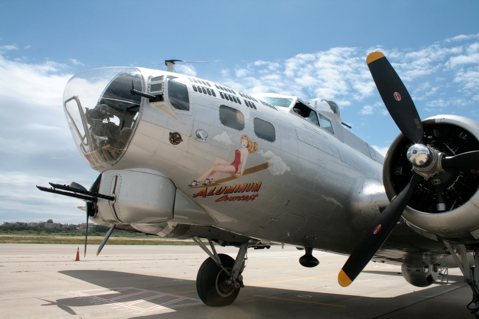
During his 17th and final mission as a B-17 tail gunner, World War II veteran Jon Kaiser was lucky the German artillery shell that blew apart one of his plane’s engines also severed his communication lines to the pilot.
Though the aircraft had taken a direct hit and soon began violently “shaking and rattling,” recalled Kaiser, the pilot told the crew to stay put as he tried to steer the plane back over the Russian line and to safe ground, away from the German target on which it had just dropped a bomb payload. Kaiser never heard the order.

Instead, sensing the plane was doomed, the 20-year-old, Houston-born Kaiser grabbed his chute, made his way to the tail gunner’s escape hatch — forcing the stuck door open with his legs and feet — and bailed out. “It wasn’t easy,” he said. The plane, with its remaining nine-man squad, did indeed crash, and no one except Kaiser survived from that particular crew within the Air Corp’s 349th Bomb Squadron of the 100th Bomb Group.
Floating down to enemy territory below, remembered Kaiser, it was all but certain that he’d be captured, but he held out hope that his two years of German would allow him to communicate and stay alive. After spending just over two weeks in a German POW camp — where he met three tail gunners who shared similar survival stories — Kaiser and the others were liberated by American troops.
This Thursday at Santa Barbara Airport, Kaiser — now 84-years-old and living in Santa Barbara — flew in a B-17 for the first time since he jumped out of one over 60 years ago. As part of its “Salute to Veterans” tour throughout the country, the EAA-owned Aluminum Overcast made a stop in town and offered a chance for veterans, media personnel, and paying customers to cruise the skies in a plane model whose reputation for toughness and ferocity during WWII garnered it the nickname Flying Fortress.
The Aluminum Overcast — painted the colors of the 398th Bomb Squadron — is only one of 13 flyable B-17s left in the nation. It was built too late in the war to see combat, but was used as a freighter in the U.S. and throughout Central America, eventually making its way to Asia where it helped map the continent.
With its bristling armament of 13 .50 caliber machine guns, the B-17 — designed and built by Boeing for the United States Army Air Corps — was often able to successfully defend itself without fighter escorts on long-range bombing missions. The four-engine heavy aircraft could carry over 8,000 pounds in payload, and was primarily used in Europe during attack operations that would last up to eight hours on rail yards, oil refineries, or production plants.
Ten-man crews, forced to withstand temperatures of -45 degrees throughout high-altitude flight, wore electric suits to keep their limbs from freezing during the long trips. (Kaiser remembered how the wind would whip in through gaps between the plane body and his guns, swirling around the narrow space and chilling him to the bone.) The planes, however, were perhaps most famous for being able to withstand heavy damage, sometimes taking multiple direct hits, without going down. Between 1935 and 1945, 12,732 planes were produced. Of those, 4,735 (almost one-third) were destroyed in the war.
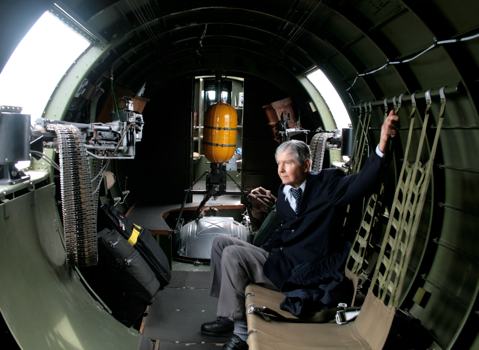
Walking toward the Aluminum Overcast, the soft-spoken Kaiser let the memory of that instant — on March 31, 1945, when his B-17 suffered a crippling shot — come over him. “This brings back fear of when we were hit,” he said. The former tail gunner, however, didn’t let his trepidation prevent him from climbing aboard and strapping in. Kaiser moved more easily along the fuselage than most of the other younger passengers as he grappled for handholds in much the same way he must have decades ago when he flew out of a small, northern British town on bombing runs.
As all four engines fire up — creating a deafening roar that raised the eyebrows of all on board except the veteran — Kaiser kept his eyes on the window. And as the plane gathered speed along the runway and nosed-up, Kaiser stared straight ahead and leaned back in the hammock-style seat, seemingly unaware of the chatter around him. When everyone got the go-ahead from the pilot to stand and move about, Kaiser quickly rose and began walking along the wooden floorboards, stepping over the ball turret, past the bomb bay and radio room, and into the cockpit where he remained for most of the short flight.
Pointing out of the front windows, he recalled that during his war days he once looked out at another B-17 in his formation and saw a hole in the side of the plane, as tall as a man and four feet wide, gaping in the open air. The plane, though, was still flying fine and went on to complete its bombing mission. “They were tough,” said Kaiser, though it wasn’t clear if he was referencing the planes themselves or the crews that manned them.
After cruising along the Santa Barbara coast for roughly 20 minutes, eventually banking back around to the airport, the B-17 touched down and let everyone off. While the rest of the passengers were filled with energy, whooping and hollering with excitement and adrenaline, Kaiser merely nodded in satisfaction. “I’m glad I did that,” he whispered.
He went on to say how happy he is that people have the opportunity to learn about and fly in historic planes like the Aluminum Overcast, as it generates an appreciation for the mental and emotional stoicism men like him had to maintain in the face of constant danger. “Things like this help the public realize how dangerous it was for us to fight.” Indeed, climbing into the front bubble turret, and understanding how exposed an airman must have felt to threats above and below, it was easy to realize the bravery needed to fight in a Flying Fortress.

